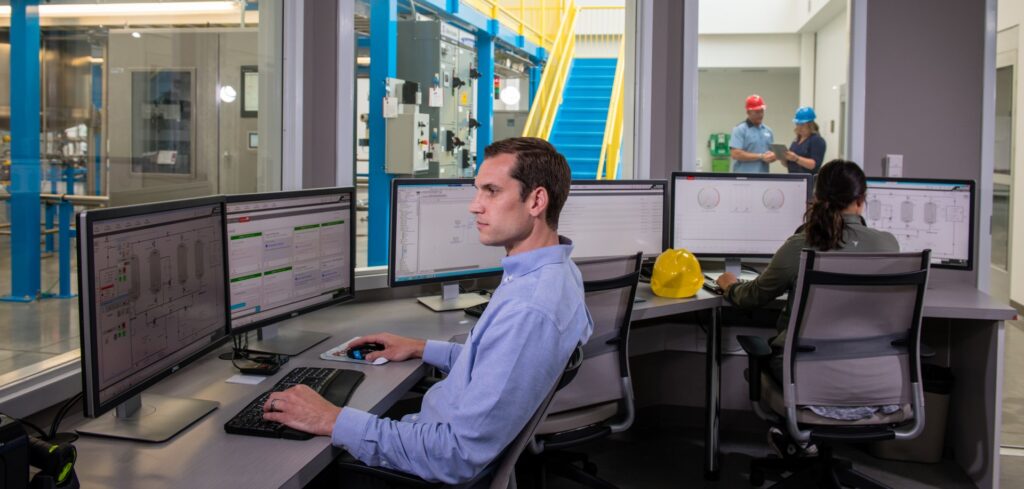Tire manufacturing is an incredibly energy intensive process, with a typical plant consuming between 120GWh and 275GWh of energy per year. Naturally, this is one of a tire plant’s biggest yearly expenses, costing between US$12m and US$27m. With natural gas consumption also very high, managing electrical and gas loads is a priority for plant managers aiming to provide the most efficient and cost-effective manufacturing system.
At present, there are several challenges that prevent full site optimization. Many manufacturing plants do not record real-time energy consumption data that can be acted on quickly, but instead rely on monthly reports and billing data. This means it’s difficult to set measurable and achievable efficiency goals. Understanding the context in which energy is consumed, such as machine settings and the amount of product produced with that energy, is another key factor in determining the best areas to optimize.
Being able to overcome these challenges is important for several reasons. For example, if all mixers, compressors and chillers are all running at full capacity at the same time, your demand (kW) will spike. During peak electricity consumption hours this could be very costly, potentially doubling the electricity bill in some cases. Inefficiencies are present across the tire manufacturing site – think of idle curing presses, which consume energy without producing anything. There are other inefficiencies in the manufacturing process such as scrap and cycle time erosion that also lead to energy inefficiencies. Fortunately, solutions are being developed which make the optimization process much easier to manage.
Rockwell Automation is combining IoT technologies with industry experience to create an energy management platform solution that provides meaningful, actionable real-time data that can manage a multitude of the biggest utilities used in the manufacturing process. This includes water, air, gas, electricity and steam, otherwise known as WAGES.
Understanding this data, and utilizing automated demand response, machine learning and artificial intelligence, can help to optimize energy efficiency, reduce greenhouse gas emissions and reduce costs.
Digital technology and machine learning in manufacturing
The adoption of digital technology in manufacturing has already proven beneficial to energy and sustainability goals, including reducing CO2 emissions, improving product quality and cost, bringing product to market much faster, and reducing machine downtime.
Rockwell’s energy management platform automates data collection, organizing this data in a way that makes it easy to visualize every plant process in terms of its product output compared with energy consumption. This can be done from plant level, right down to individual machines. The data is then broken down further by utility types, helping to provide clarity in deciding which areas to prioritize in terms of capturing operational savings.
To meet customer requirements, Rockwell Automation uses an approach that takes into account the discovery, demonstration and deployment stages of their energy management platform personalized to customer requirements.
The discovery stage involves finding out about the objectives of the plant – what they want to achieve with the technology, from reducing energy intensity to overall cost. From there, key performance indicators can be assessed, and gaps in the plant energy model can be identified. This then leads to the demonstration stage, using prototype user interfaces and dashboards to help fine-tune the final product to the customer requirements. Finally, the product is then deployed, ready to work toward the goals set out at the beginning of the process.
This scalable architecture includes programmable logic computers, power meters, variable frequency drives and an IoT platform. It does not matter which manufacturer provides this equipment – the energy management platform is compatible with technology from all vendors, to ensure that it remains agnostic, commercially off-the-shelf, and supportable for the long term.
The energy management platform in practice
One of the ways in which Rockwell is improving energy efficiency is by optimizing machines and processes, which increases sellable product throughput and reduces operating costs.
A recent case study provides proof of concept for machine and energy optimization. A tire manufacturer was experiencing frequent out-of-tolerance tire splices. With each occurrence, the machine operator would need to stop the machine to get in and manipulate the tire splice back into tolerance, before resetting and starting the process again. This downtime came at a significant cost to production and energy efficiency.
In answer to this, Rockwell was able to train a machine learning model using historical data on these splices. Then, in real time, the model would predict when bad splices would occur and prescribed pressure roller changes to manipulate the splice back into tolerance. With each application, the machine learning reinforced its model, further increasing its performance over time.
As a result, overall stoppages decreased by 45%, leading to an additional 600,000 tires being produced per year across 14 machines while reducing the overall energy consumed per tire. This facilitated an estimated US$25m boost in incremental net income.
Rockwell Automation is optimistic that this energy management platform solution has the potential to be used across multiple applications in the tire manufacturing sector, reducing operating costs while also increasing revenue.



